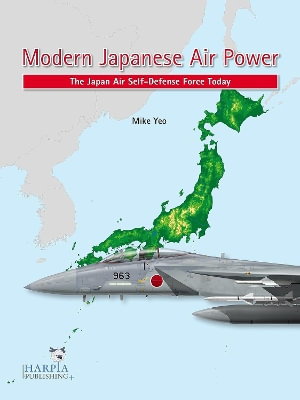
PublishedHarpia Publishing, June 2024 |
ISBN9781950394159 |
FormatSoftcover, 256 pages |
Dimensions28cm × 21cm |
Japan is increasingly becoming a key player in the Indo-Pacific security environment, as regional tensions ramp up over a variety of different factors including the rise of China, territorial disputes, and geopolitical shifts. The long-term US ally has taken on a larger role in regional security as its government re-interprets its pacifist constitution and enables it to take on a more activist defence posture.
Its air arm, the Japan Air Self-Defense Force (JASDF), is one of the most well-equipped in the region, with around 200 F-15 Eagle interceptors and more than 80 F-2 multirole fighters. It is in the process of upgrading its F-15s, re-equipping with F-35A/B Lightning II stealth fighters and developing its own indigenous next-generation fighter. In addition to its combat power, the JASDF also operates modern force-multiplier types such as airborne early warning aircraft, inflight refuelling tankers, and high-altitude long-endurance unmanned aircraft, making it one of the region's most capable air arms. The JASDF is tasked with the defence of Japan, a role which is today being redefined as going beyond the defence of its own airspace to cover Exclusive Economic and Air Defense Identification Zones. This task is increasingly difficult as China, and to a lesser extent, Russia and North Korea, step up their air activities in both. This book takes an in-depth look at the JASDF, outlining its history, current order of battle, capabilities, organisation, training, and its future plans. It also examines the achievements of Japan's indigenous military aviation industry and its plans for the future, as the country seeks to address the regional military balance that is increasing tilting in favour of China, which has unresolved historical tensions and territorial disputes with Japan. AUTHOR: Mike Yeo is a Singaporean defence journalist based in Melbourne. He wrote his first aviation-related magazine article in 1998 and became a freelance defence reporter in 2013 before becoming full-time in 2016. Mike has a degree in Aerospace Engineering and as a reporter he has covered the defence industry, military forces and geopolitics of the Indo-Pacific region and has written for Defense News, the United States Naval Institute, Australian Defence Magazine, and Janes, among others. He also has a keen interest in military history, particularly in the Pacific War and has previously written a book on Japan's kamikaze campaign.

